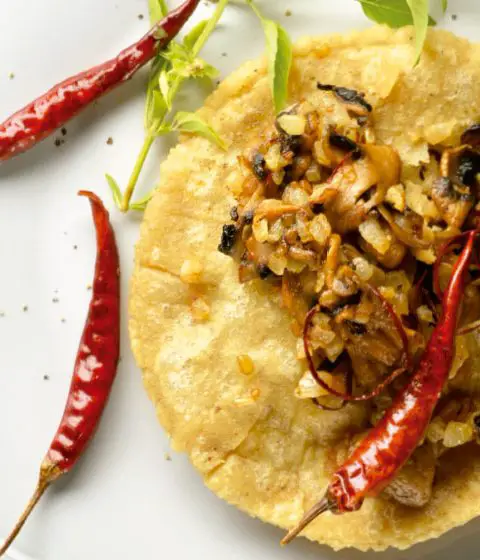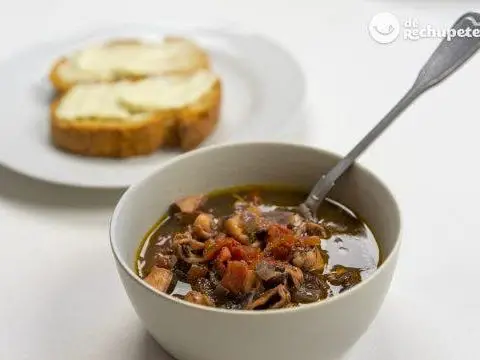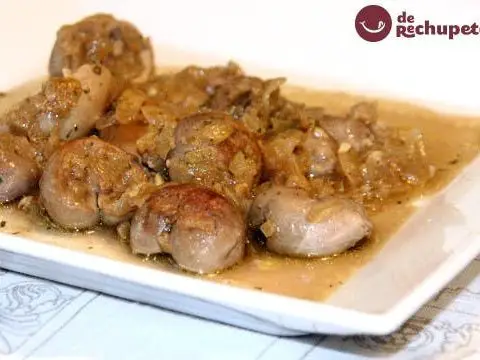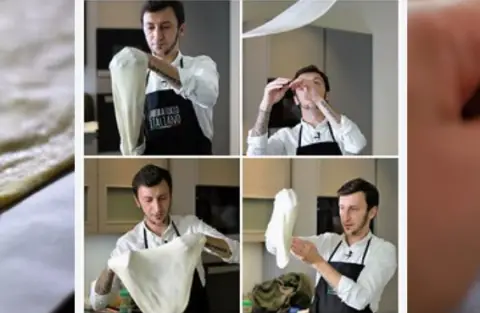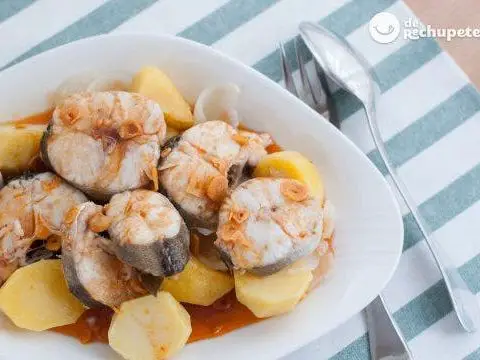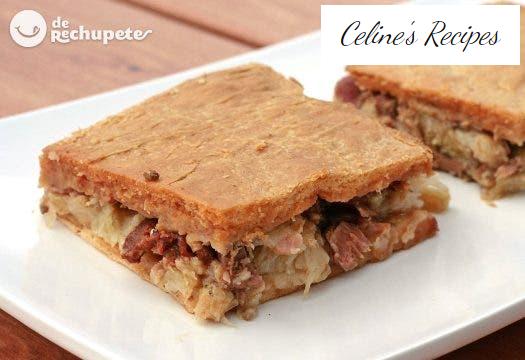
Info.
- Half
- 90 minutes
- For 8 people
- € 0.9 / person
- 305kcal per 100g.
How to prepare a Galician stew pie. I am sure that this empanada will surprise you, a delicacy that mixes two typical Galician dishes: the cocido and the empanada. Summarize two of my favorite dishes from the wide Galician gastronomy.
Galician stew for those who have not tried it, is more abundant and stronger than Madrid stew and similar in its ingredients to others in northern Spain.
You can not miss the bacon, different varieties of chorizo (meat or onion) and various pieces of pork, such as lacón, oreja, the “cacheira” or cachucha (head), rib, nose … and many times it is added quality Galician beef. All accompanied by a variety of vegetables from the garden (turnip greens, collards, cabbage) and legumes (beans, chickpeas).
The stew has inspired couplets, books and even an opera. Throughout the Spanish geography we find cooked in multiple variants, the Galician , the Basque, the Catalan escudella , the Asturian pot , the famous Madrid stew , the mountain stew, the rotten pot, the Canarian stew , the Andalusian stew or pringá , the Cocido Maragato , the gypsy pot from Murcia , the preacher’s dam in Aragon, and some that I will surely forget … all variants of the same idea, the cocido .
This empanada will be, along with the zamburiñas empanada , the star of the blog to which empanadas I refer. Here you have the step-by-step recipe to turn your kitchen into a piece of Galicia and that a crispy piece of rich Galician pie comes out of your oven. To her!
Preparation of the remains of Galician stew
The key to making this recipe a success is the quality of the ingredients. On the one hand, the bread dough and why the company uses the best, such as these remains of Galician or Madrid stew, Asturian pot, maragato, montañés, escudella, rotten pot …
The cooked, whatever the area, it is sure to be delicious. In case you want to dare to prepare the Galician stew before you have the recipe on this blog: Preparation of Galician stew , with the leftovers it will give you for various empanadas, for sure.
- For the compango base we will need onion. Put the extra virgin olive oil in a saucepan and when it is hot, add the 3 onions in a thin julienne, that is, in finite strips.
- We spend about 8 minutes over medium heat until they are transparent and poached. We remove from the casserole to a source and we already have the first layer of the pie.
- We rectify with salt. Let it cool and remove the excess oil from the onions in a glass.
- It is important to remove the excess oil so that the filling is juicy and at the same time to use it in the preparation of the dough, as I explain later.
Preparation of the Galician empanada dough
We already have the compango or roast cooling, the excess oil in the glass and now we can already prepare the dough.
- In a large bowl we introduce part of the strength flour . We leave about 4 tablespoons to fatten the dough.
- In the center of the bowl, with a spoon we make a hole, and introduce the pressed baker’s yeast or 15 g of an envelope of baker’s yeast dissolved in warm water.
- Beat with a wooden spoon from the center outwards and gradually mix with the flour.
- Add the oil from the sauce of the filling and the salt, without going over since the oil of frying the pork is a little salty. We continue removing what begins to be the dough. For now it will be a sticky but firm mix.
- We prepare the area where we are going to knead, for example the kitchen counter is perfect. We fill the area of the counter with flour, remove the dough from the bowl and begin to work the dough with your hands.
- Little by little we can manipulate the dough more quickly, it will remain elastic and homogeneous. This process takes about 10 minutes.
- We are turning the dough into a ball. We take the previous bowl and flour it. We introduce the dumpling into it.
- We cover the bowl with a cotton cloth for an hour and wait for it to double in size. And that’s it, there we have the dough to start preparing the cooked empanada or the one that we like the most.
Preparation, stretching and filling of the pie.
- We divide the empanada dough into two similar parts, you can choose this type of dough although if you want to try other types of flour you have other possibilities of doughs . We knead the two balls again to be able to work well with them.
- We flour the kitchen counter and roll out the dough with the rolling pin.
- We make the base that will be the size of the baking tray. We will stretch it as thin as possible with the help of the roller.
- We put on the tray a piece of paper for baking or waxed and on top the base cutting the excess if needed.
- First add a layer of onion and on top we will put a layer of vegetables.
- I like cabbage the most, but it depends on what is left over, (turnip greens, turnips or collards).
- We distribute it throughout the base of the empanada without leaving a gap, as I show you in the photos. It is very important that the filling is cold so that the dough holds up well.
- Chop the lacón into very small pieces and sprinkle over the vegetables.
- Chop the chorizo and bacon into thin slices and place over the shoulder. If you have any more remains do not hesitate to throw it out, it will do well.
Preparation, baking and final presentation of the empanada
- We cover with the other half well stretched.
- We seal it by the edges braiding the lower part over the upper one with the help of a fork or with the help of the fingers. From right to left and then pressing.
- We make a small hole in the center for the empanada to breathe. With a fork we prick through different areas, so it will not swell. We decorate with strips or cords of the excess pasta.
- We paint the empanada with virgin olive oil with the help of a kitchen brush.
- Preheat the oven for 180 minutes at 180º C. Then put the empanada at the same temperature, first in the bottom of the oven (about 20 minutes). Then another 15-20 minutes in the center. When it is golden brown, we remove it.
And finally the empanada! Be careful when removing it from the tray because it will still be hot and it is easy to break. Cut it with a good scissor or serrated knife, when it is warm.
I can assure you that not even a few miserable faragullas (crumbs) Bon appetit!
Be sure to enjoy all the cooked and yummy stews in our recipes for soups and stews , and of course all the recipes with meat both to make this empanada and the famous cooked croquettes .


